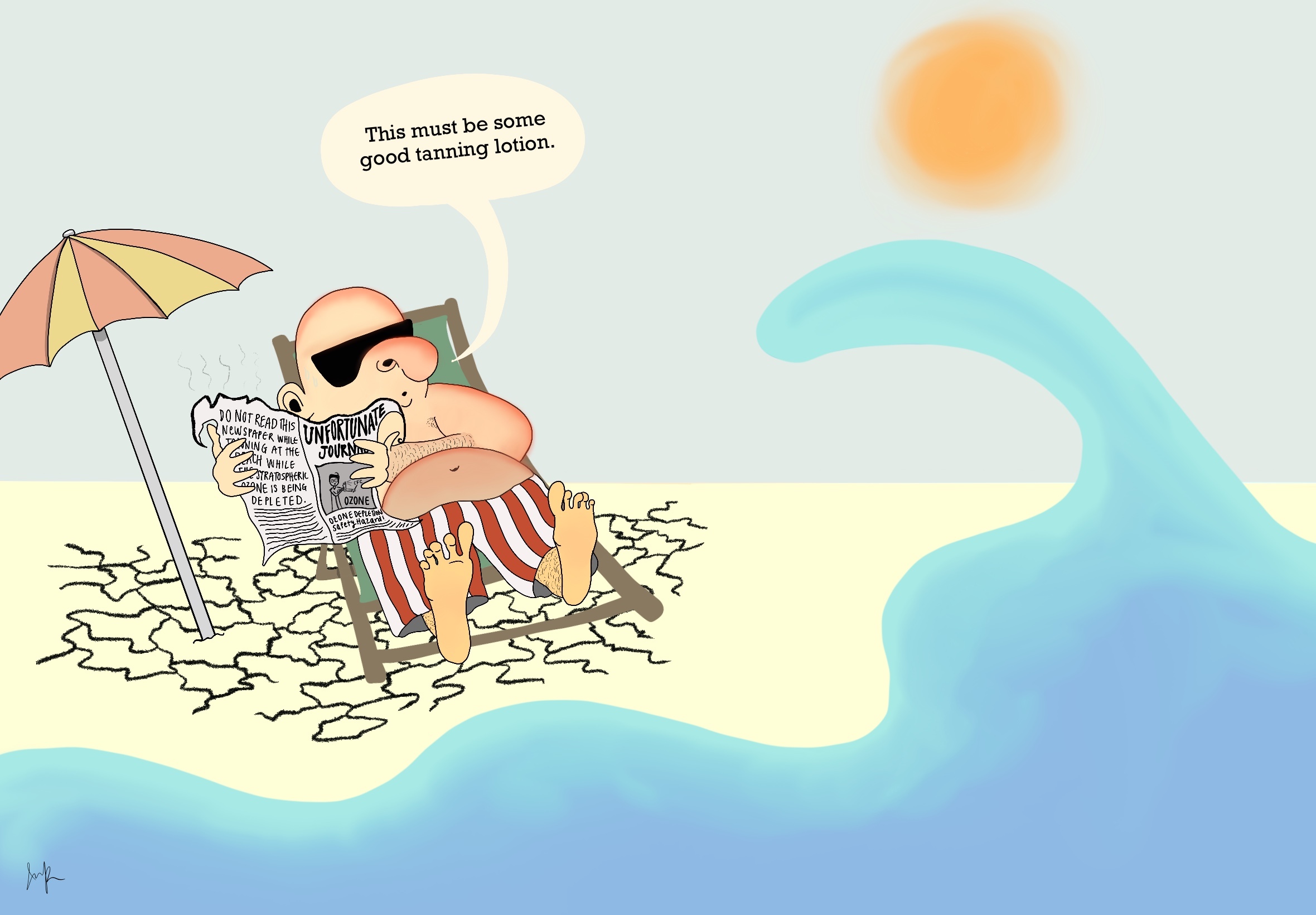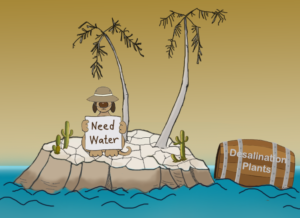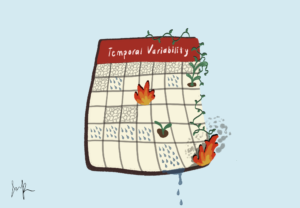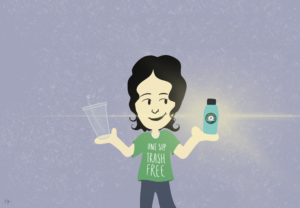Illustrated by Julianne Park. All rights reserved.
If you’ve ever gone to the beach or the park, your parents probably told you to put on sunscreen. You would ask them why and they would answer that you would get skin cancer from ultraviolet radiation while smearing the white paste on your face. Well, did you know that Banana Boat wasn’t the only sunscreen protecting you from radiation?
Around 17 kilometers above your head lies the ozone layer in the stratosphere, the second atmospheric layer with a very high ozone concentration and a low volume of water vapor.
When oxygen molecules interact with UV radiation, it produces ozone. Ozone is known as the “global sunscreen” as it blocks up to nearly 98 percent of ultraviolet light (National Geographic) and protects us from carcinogens. Thanks to the ozone layer, we are provided this sunscreen to help prevent sunburn, cancers, and immune system damage. The ozone layer also prevents tropospheric ozone formation, which is detrimental to air quality and human health.
However, starting in the 1970s, scientists noticed significant thinning in the stratospheric ozone concentrations above Antarctica, the Arctic, and soon in tropical regions as well. The “ozone hole” we know today is a misnomer; rather than a punctured hole in the stratospheric ozone layer, it is more of a thinning and lowered ozone concentrations over time.
Several negative impacts stem from this ozone depletion. Ozone loss allows increased UV radiation to pass through the Earth’s atmosphere. As a result, we are increasingly exposed to skin cancer and other health risks. Ozone thinning also leads to ground-level ozone production and increased global temperatures. Other impacts include increased natural disasters, warming oceans, habitat loss, and decreased economic services. Saving the ozone is crucial. And in order to solve this severe threat, scientists needed to find out why the ozone was thinning.
The culprit was a chemical called chlorofluorocarbons, or CFCs. These chemicals became increasingly popular and pervasive in our everyday lives for their nonflammable and nontoxic qualities. Found in everyday objects such as refrigerators, conditioners, aerosol spray cans, and insulation gases, CFCs were loved and used in abundance.
Unfortunately, in 1974, chemists Sherwood Rowland and Mario Molina discovered that CFCs were destroying the ozone in the stratosphere. Their studies revealed that CFCs were persistent chemicals and could break down more ozone in a cyclic chain at a fast rate throughout its life span, ranging from half a decade to nearly four hundred years. CFCs also act as greenhouse gases to warm the troposphere. These chemicals exacerbated climate change and put our health and planet at severe risk.
In 1987, thirty-six nations met to produce the Montreal Protocol. Later, with the worsening news of the ozone, the Copenhagen Amendment was adopted in 1992 by ninety-three countries to phase out CFCs and take additional measures. Countries worked together to prevent CFC emissions by substituting them with alternatives.
In 2016, a NASA study concluded that ozone thinning was shrinking and that by 2050, the protective layer would return to its 1980 conditions.
Ozone depletion is still occurring in our stratosphere as the persistent CFC chemicals released many years ago are still breaking down and continuing their cyclic chemical reactions. However, because of our ability to immediately act and phase out chlorofluorocarbons, we are heading towards recovery.
The ozone thinning incident serves as a reminder of a severe threat posed by human activities, its consequences on our planet, and most importantly, our ability to act quickly upon the situation, work together, and find a solution.
We must learn from our mistakes; we must also learn from our successes. While there are still chlorofluorocarbons in the ozone layer, we prevented what may have been an atmospheric crisis. We may have prevented increased climate change, photochemical smog, acid deposition, health problems, crop yield losses, and reduced phytoplankton populations.
We are still in a crisis: a climate crisis. And it’s up to how we act now that will shape the future of not our planet but our futures on this planet.
Sources:
“Ozone Layer.” National Geographic Society, https://education.nationalgeographic.org/resource/ozone-layer.
Miller, G. Tyler, and Scott Spoolman. Exploring Environmental Science: For Ap. Cengage, 2021.
“UN, United Nations, UN Treaties, Treaties.” United Nations, United Nations, https://treaties.un.org/.
“The Montreal Protocol on Substances That Deplete the Ozone Layer.” The Copenhagen Amendment (1992): The Amendment to the Montreal Protocol Agreed by the Fourth Meeting of the Parties (Copenhagen, 23-25 November 1992) | Ozone Secretariat, https://ozone.unep.org/treaties/montreal-protocol/amendments/copenhagen-amendment-1992-amendment-montreal-protocol-agreed.
The views and opinions expressed are those of the authors and do not necessarily reflect nor represent the Earth Chronicles and its editorial board.










